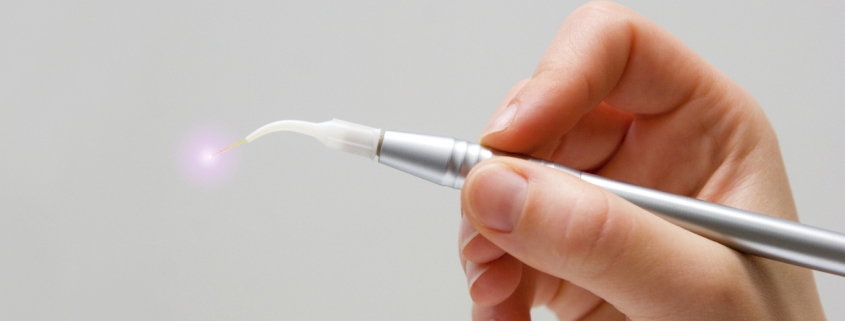Laser Dentistry: Benefits and Uses
Laser Dentistry was first introduced in the 1990s as a treatment for gum disease. Today, it is widely used for a variety of treatments after it was deemed safe and effective, and most importantly, a less painful way for treatments to be conducted. That being said, the laser cannot be used for all treatments, but speak with your dentist regardless to see if it is an option available to you. Most dentists will opt in for laser treatments if available and if they are well trained in that area.
Benefits of Laser Dentistry
As mentioned above, using a laser is far less invasive than going with standard tools like a drill. While a drill may cause some bleeding, inflammation, and discomfort, using a laser with significantly decrease all of these things as it causes less trauma to the affected and surrounding tissue. When a laser is used, the patient won’t have to use as much anesthetic for pain relief which in turn means a shorter healing time, and your mouth won’t have to remain numb for quite as long.
Lasers allow the dentist to be more precise and better target just the affected areas so that less damage is done to the healthy tissue that surrounds the gum. The use of lasers also comes with a reduced infection rate as lasers are able to kill the bacteria that come into contact with it.
The Use of Lasers in Dentistry
As mentioned above, not all dentist offices will have lasers available as there may not be staff trained in this area. Every situation is also unique and lasers may not be the best choice for you. Below are some of the procedures that can be done with lasers, should laser dentistry be available at your dental office.
- Removing decayed matter from the tooth
- Gum shaping
- Removing plaque and tartar
- Biopsies for oral cancer screenings
- Gum surgery
Does Laser Dentistry Completely Replace Drills and Traditional Tools?
No, there are some things that a laser cannot achieve that a drill still can. For example, when replacing a filling, a laser cannot remove the previous filling in which case a drill will have to be used. A laser also cannot be used when undergoing a bridge procedure.
Lasers are more so used for smaller procedures or dental cases that are on the minor side of the scale. With larger cavities or cavities that are in hard to reach places, your dentist will more than likely resort to using more traditional methods as it would not be safe to use the laser in these situations.
However, it is up to the skill and experience of the dentist involved in the procedure. Dentists that have multiple years experience with a laser will be able to perform more complicated procedures with a laser, whereas someone with only a few months will probably only be able to handle simple cases where a laser can be used. Always inquire about these things before signing on for a dental procedure to ensure that your needs are being met and you get the best quality care possible.

